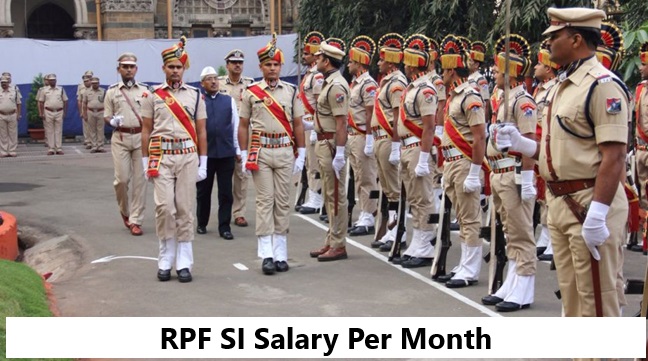The IAS salary after 5 years reflects the growth and prestige associated with one of India’s most coveted civil services. As an Indian Administrative Service officer, your career progresses through structured pay scales, promotions, and increasing responsibilities. After five years of service, most IAS officers advance to higher pay levels, enjoying better financial rewards and greater administrative roles. This article delves into the salary structure, including the pay scale, allowances, and benefits IAS officers receive after completing five years in the service, highlighting how the profession combines monetary growth with immense societal impact.
Basic Pay of IAS Officers (2024 Update)
- Junior Scale (Entry-level)
- Pay Level: 10
- Basic Pay: ₹56,100 per month
- Grade Pay: Included in pay scale
- Gross Salary (including DA, HRA, TA): ₹70,000 – ₹1,10,000 per month (varies by city and allowances)
- Senior Time Scale (4 years of service)
- Pay Level: 11
- Basic Pay: ₹67,700 per month
- Junior Administrative Grade (9 years of service)
- Pay Level: 12
- Basic Pay: ₹78,800 per month
- Selection Grade (13 years of service)
- Pay Level: 13
- Basic Pay: ₹1,18,500 per month
- Super Time Scale (16–20 years of service)
- Pay Level: 14
- Basic Pay: ₹1,44,200 per month
- Above Super Time Scale (Varies with positions like Chief Secretary, Cabinet Secretary)
- Pay Level: 15
- Basic Pay: ₹1,82,200 per month
- Apex Scale (Senior-most IAS Officers)
- Pay Level: 16
- Basic Pay: ₹2,05,400 per month
- Cabinet Secretary Grade (Highest Rank in IAS)
- Pay Level: 17
- Basic Pay: ₹2,50,000 per month (fixed)
Additional Allowances and Benefits
IAS officers also receive several allowances and perks that significantly enhance their overall compensation:
- Dearness Allowance (DA): Adjusted regularly to offset inflation, currently around 42% of the basic pay.
- House Rent Allowance (HRA):
- 27%, 18%, or 9% of basic pay, depending on the city of posting (X, Y, Z cities).
- Officers provided with government accommodation do not receive HRA.
- Travel Allowance (TA): Provided for official travel and personal use in certain cases.
- Medical Benefits: Full reimbursement for medical treatment.
- Pension Benefits: IAS officers are entitled to a pension after retirement under the New Pension Scheme (NPS).
-
IAS Salary Structure
The IAS salary is organized into different pay levels, corresponding to the officer’s rank and years of service. Below is a detailed breakdown:
Pay Level Years of Service Position Basic Pay (₹) 10 1–4 Sub-Divisional Magistrate (SDM) / Undersecretary 56,100 11 5–8 Additional District Magistrate (ADM) / Deputy Secretary 67,700 12 9–12 District Magistrate (DM) / Joint Secretary 78,800 13 13–16 District Magistrate (DM) / Special Secretary-cum-Director 1,18,500 14 16–24 Divisional Commissioner / Secretary-cum-Commissioner 1,44,200 15 25–30 Divisional Commissioner / Principal Secretary 1,82,200 16 30–33 Additional Chief Secretary 2,05,400 17 34–36 Chief Secretary 2,25,000 18 37+ Cabinet Secretary of India 2,50,000 Note: The above figures are based on the 7th Pay Commission recommendations.
Allowances and Benefits
In addition to the basic pay, IAS officers are entitled to various allowances:
- Dearness Allowance (DA): This is adjusted periodically to offset inflation. As of 2025, the DA is approximately 42% of the basic pay.
- House Rent Allowance (HRA): Varies based on the city of posting:
- X (Tier-1) Cities: 24% of basic pay
- Y (Tier-2) Cities: 16% of basic pay
- Z (Tier-3) Cities: 8% of basic pay
Note: If government accommodation is provided, HRA is not applicable.
- Transport Allowance (TA): Provided to cover commuting expenses. The amount varies based on the city and is subject to DA.
- Medical Allowance: Covers medical expenses for the officer and their dependents.
- Other Benefits: These include subsidized housing, official vehicles, security, household staff, and opportunities for study leave.
-
IAS Salary Per Month (2024–2025)
Pay Level Rank/Position Basic Pay (₹) Approx. Gross Salary (₹) 10 Sub-Divisional Magistrate (SDM) / Undersecretary 56,100 70,000–1,10,000 11 Additional District Magistrate (ADM) / Deputy Secretary 67,700 85,000–1,25,000 12 District Magistrate (DM) / Joint Secretary 78,800 95,000–1,40,000 13 District Magistrate (DM) / Director 1,18,500 1,40,000–1,90,000 14 Divisional Commissioner / Secretary-cum-Commissioner 1,44,200 1,80,000–2,30,000 15 Principal Secretary 1,82,200 2,00,000–2,50,000 16 Additional Chief Secretary 2,05,400 2,40,000–2,80,000 17 Chief Secretary 2,25,000 2,50,000–3,00,000 18 Cabinet Secretary of India 2,50,000 (Fixed) 2,50,000+
Key Components of IAS Salary After 5 Years
- Basic Pay: Core monthly salary, starting at ₹56,100 for entry-level officers.
- Dearness Allowance (DA): Around 42% of basic pay, adjusted regularly to account for inflation.
- House Rent Allowance (HRA):
- X Cities (Metro): 27% of basic pay.
- Y Cities (Urban): 18% of basic pay.
- Z Cities (Rural): 9% of basic pay.
- Government accommodation eliminates HRA eligibility.
- Travel Allowance (TA): Based on the city of posting.
- Deductions:
- Income Tax: Based on taxable income.
- Professional Tax: Varies by state.
- NPS Contribution: Part of retirement benefits.
In-Hand Salary (Approximate)
- Entry-level IAS officer (Pay Level 10): ₹58,000–₹72,000 per month.
- Senior officers (Pay Level 14): ₹1,40,000–₹1,80,000 per month.
- Top ranks (Cabinet Secretary): ₹2,50,000 fixed per month.
-
IAS Salary After 5 Years (Senior Time Scale)
- Position: Additional District Magistrate (ADM) or Deputy Secretary.
- Pay Level: 11
- Basic Pay: ₹67,700 per month.
Components of IAS Salary After 5 Years:
Component Details Basic Pay ₹67,700 Dearness Allowance (DA) Approx. 42% of basic pay (₹28,434) House Rent Allowance (HRA) 27%, 18%, or 9% of basic pay depending on the city of posting (₹18,279 for metro cities). Travel Allowance (TA) Fixed, varies by city of posting (approx. ₹3,000–₹5,000). Gross Salary ₹1,00,000–₹1,25,000 (including allowances). Deductions Income Tax, NPS Contribution (approx. ₹10,000–₹15,000 combined). In-Hand Salary ₹85,000–₹1,10,000 per month.
Key Career Progression :IAS Salary After 5 Years
- First Year: Entry-level position as Sub-Divisional Magistrate (SDM) with Pay Level 10 (Basic Pay: ₹56,100).
- Fourth Year: Eligible for promotion to Senior Time Scale (Pay Level 11).
- Fifth Year: Likely holding a position like Additional District Magistrate or Deputy Secretary, with Basic Pay of ₹67,700.
Benefits and Perks: IAS Salary After 5 Years
- Official Residence: Government-provided housing or House Rent Allowance (HRA).
- Official Vehicle: With a driver for higher responsibilities.
- Medical Benefits: Full coverage for self and dependents.
- Other Perks: Subsidized electricity, water, telephone, and official travel benefits.
-
IAS Salary After 10 Years
- Position: Likely positions include District Magistrate (DM), Joint Secretary, or Director at state/national levels.
- Pay Level: 12 (Junior Administrative Grade) or 13 (Selection Grade).
- Basic Pay:
- Pay Level 12: ₹78,800 per month.
- Pay Level 13: ₹1,18,500 per month.
Components of IAS Salary After 10 Years
Component Pay Level 12 (₹) Pay Level 13 (₹) Basic Pay ₹78,800 ₹1,18,500 Dearness Allowance (DA) ₹33,096 (42%) ₹49,770 (42%) House Rent Allowance (HRA) ₹21,276 (27% in metros) ₹31,995 (27% in metros) Travel Allowance (TA) ₹3,000–₹5,000 ₹3,000–₹5,000 Gross Salary ₹1,25,000–₹1,50,000 ₹1,75,000–₹2,00,000 Deductions ₹15,000–₹20,000 ₹20,000–₹25,000 In-Hand Salary ₹1,10,000–₹1,30,000 ₹1,50,000–₹1,75,000 Career Progression After 10 Years
- First 4 Years: Entry-level and Senior Time Scale, typically serving as SDM or Additional District Magistrate (Pay Levels 10–11).
- 5–9 Years: Junior Administrative Grade (Pay Level 12), usually as District Magistrate or Joint Secretary.
- 10th Year: Eligible for Selection Grade (Pay Level 13), often serving as Director, District Magistrate, or Commissioner in some cases.
Perks and Benefits After 10 Years
- Official Accommodation: High-quality government housing or HRA depending on the city of posting.
- Transport Facility: Official vehicle with a driver.
- Medical Benefits: Comprehensive coverage for self and dependents.
- Travel Entitlements: Business-class travel for official trips.
- Other Perks: Subsidized utilities, phone reimbursements, and access to guesthouses for official tours.
IAS Salary Growth in 10 Years
- Year 1: ₹56,100 basic pay as an SDM (Pay Level 10).
- Year 5: ₹67,700 basic pay as an ADM or Deputy Secretary (Pay Level 11).
- Year 10: ₹78,800–₹1,18,500 basic pay as DM, Joint Secretary, or equivalent (Pay Levels 12–13).
-
IAS Salary After 20 Years
- Position: Typically, Divisional Commissioner, Principal Secretary, or Secretary to the State Government.
- Pay Level: 14 or higher (Super Time Scale and Above Super Time Scale).
- Basic Pay: ₹1,44,200 to ₹2,05,400 per month.
Components of IAS Salary After 20 Years
Component Pay Level 14 (₹) Pay Level 15+ (₹) Basic Pay ₹1,44,200 ₹1,82,200–₹2,05,400 Dearness Allowance (DA) ₹60,564 (42%) ₹76,524–₹86,268 (42%) House Rent Allowance (HRA) ₹38,934 (27% for metros) ₹49,194–₹55,458 (27%) Travel Allowance (TA) ₹7,200–₹9,000 ₹7,200–₹9,000 Gross Salary ₹2,50,000–₹3,00,000 ₹3,00,000–₹3,50,000 Deductions ₹20,000–₹30,000 ₹25,000–₹35,000 In-Hand Salary ₹2,20,000–₹2,70,000 ₹2,75,000–₹3,15,000 Career Progression After 20 Years
- First 4 Years: Entry-level roles such as SDM or Undersecretary (Pay Levels 10–11).
- 5–9 Years: District Magistrate or equivalent roles (Pay Levels 12–13).
- 10–15 Years: Divisional Commissioner, Director, or Secretary roles (Pay Levels 13–14).
- 16–20 Years: Principal Secretary or Divisional Commissioner (Pay Levels 14–15).
- 20+ Years: Eligible for Apex Scale positions such as Chief Secretary of a state or senior roles at the national level (Pay Levels 16–17).
Additional Perks After 20 Years
- Official Accommodation: Premium government-provided housing, especially in metro cities.
- Official Vehicle: With a dedicated driver for official and personal use.
- Medical Benefits: Comprehensive healthcare coverage for the officer and their dependents.
- Travel Entitlements: Business-class air travel and higher allowances for official tours.
- Pension and Retirement Benefits: Post-retirement pension benefits under the New Pension Scheme (NPS).
IAS Salary Growth Over 20 Years
- Entry Level (Year 1): ₹56,100 basic pay (Pay Level 10).
- After 5 Years: ₹67,700 basic pay (Pay Level 11).
- After 10 Years: ₹78,800–₹1,18,500 basic pay (Pay Levels 12–13).
- After 20 Years: ₹1,44,200–₹2,05,400 basic pay (Pay Levels 14–15+).
Apex Scale (For Top Positions)
Officers who reach the Apex Scale (Pay Level 16), such as Chief Secretary or Cabinet Secretary, receive:
- Basic Pay: ₹2,25,000 (Chief Secretary) or ₹2,50,000 (Cabinet Secretary).
- Gross Salary: ₹3,00,000–₹3,50,000 per month.
- In-Hand Salary: ₹2,80,000+ per month.
-
Conclusion
The IAS salary after 20 years reflects both financial growth and the prestige of high-ranking administrative roles. With a gross monthly salary between ₹2,50,000 and ₹3,50,000, along with extensive perks and benefits, IAS officers enjoy a rewarding career trajectory that aligns with their contributions to governance and public service.











Leave a Reply